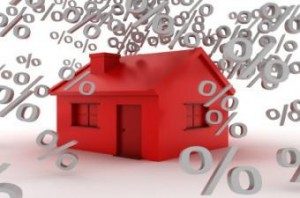 Interest rates on fixed-rate mortgages have risen by approximately 75 basis points over the last eight weeks and are at a two-year high. But how much higher are they going to get?
Interest rates on fixed-rate mortgages have risen by approximately 75 basis points over the last eight weeks and are at a two-year high. But how much higher are they going to get?
Not very much higher—at least not in 2017, according to Greg McBride, Chief Financial Analyst for Bankrate.com. The current 30-year FRM interest rate is 4.45 percent, but McBride does not expect it will get above 4.5 percent before the end of 2017. But he believes there will be some gyration between 4 and 4.5 percent during the next 12 months.
“Rates jumped about three-quarters of a percentage point on the widespread perception that we're going to get government stimulus, tax cuts, infrastructure spending, repatriation of cash, and the things that could accelerate economic growth,” McBride said. “But markets have certainly priced in what I think is a truly best-case scenario. If reality fails to match up to those expectations, markets are going to have to recalibrate.”
McBride cited the “slow growth economy” as the driver behind the expected gyrating of rates between 4 and 4.5 percent this year, but it is possible that rates might dip below 4 percent at some point, which will provide more opportunities to refinance mortgage loans for homeowners that missed their chance in 2016 while rates hovered near record lows, he said.
“Even if we do get all the stimulus measures that markets have priced in, this is money that's not likely to hit the economy before 2018. So we're undoubtedly going to have some volatility during the year,” McBride said. “If we have a market selloff or some kind of economic scare, don't be surprised if mortgage rates move back below that 4 percent mark for a period of time.”
As for the Federal Reserve’s projection that it will raise the federal funds target rate three times in 2017, McBride said he expects only two rate hikes this year. Even so, he expects the effect of the Fed’s rate hikes on mortgage rates to be minimal.
“Mortgage rates often move well in advance of any action that the Federal Reserve takes. I expect that's going to be the case again in 2017,” McBride said. “Regardless of when the Federal Reserve raises short-term rates, by the time they do so, mortgage rates will long have reflected what the outlook is from an economic standpoint, from an inflation standpoint. These rate hikes from the Fed will be well-telegraphed. They won't be surprises. That's why long-term interest rates will have priced that in well in advance.”

 theMReport.com Your trusted source for mortgage banking news
theMReport.com Your trusted source for mortgage banking news









